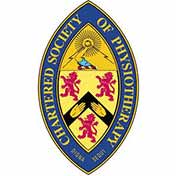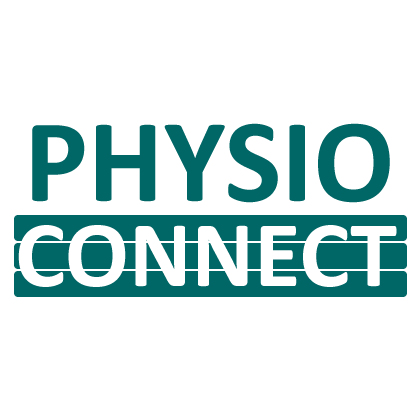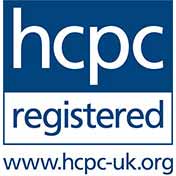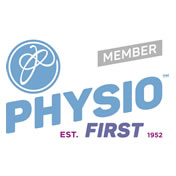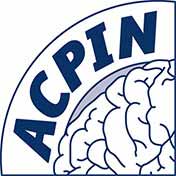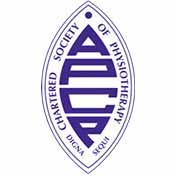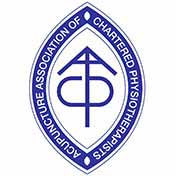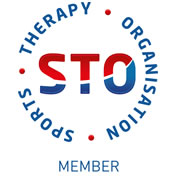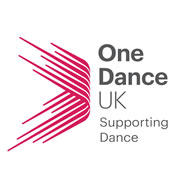 Sports Massage Therapy involves the management and manipulation of the body’s soft tissues (muscles, tendons, ligaments and connective tissue). It can be effective not only in helping recovery from injury, but also as an important part of your injury prevention strategy - to maintain the body in a good condition, aid mobility, improve circulation, and boost performance. And remember, it’s not only for elite athletes – every job/profession/sporting activity (from recreational to professional level) can stress and strain the body in a particular way, so the benefits of massage techniques are universal!
Sports Massage Therapy involves the management and manipulation of the body’s soft tissues (muscles, tendons, ligaments and connective tissue). It can be effective not only in helping recovery from injury, but also as an important part of your injury prevention strategy - to maintain the body in a good condition, aid mobility, improve circulation, and boost performance. And remember, it’s not only for elite athletes – every job/profession/sporting activity (from recreational to professional level) can stress and strain the body in a particular way, so the benefits of massage techniques are universal!
Book Now!
Our Sports Massage Therapist is Kat Sellers.We operate a clinic-based service and also a mobile service upon request. Appointments may be booked for 1 hour (£50) or 30 minutes (£35) on our Pay As You Go option. Please note that all new client appointments must be booked for an hour-long session so that there is sufficient time to complete the assessment paperwork and carry out the treatment. When booking one of our block booking packages (Bronze3, Silver6, Gold12), you will be required to first have an initial assessment session, before beginning the block.
To make an appointment for a sports massage, please contact our central reception team on 0113 2870926 or, for any further information regarding this service, please call our Clinical Director Sarah Joice on 07908 684441.
Pricing Options
| Pay As You Go | |||
| 1 x 1 Hour Session | £50 | ||
| 1 x 30 Min Session | £35 | ||
| Treatment Packages | |||
| BRONZE 3 (10% Saving) | PAYG Price | Bronze Price |  |
| 3 x 1 Hour Sessions | £150 | £135 | |
| 3 x 30 Min Sessions | £105 | £94.50 | |
| SILVER 6 (15% Saving) | PAYG Price | Silver Price |  |
| 6 x 1 Hour Sessions | £300 | £255 | |
| 6 x 30 Min Sessions | £210 | £178.50 | |
| GOLD 12 (20% Saving) | PAYG Price | Gold Price |  |
| 12 x 1 Hour Sessions | £600 | £480 | |
| 12 x 30 Min Sessions | £420 | £336 |
About Sports Massage!
The various treatment techniques have been developed by sports massage therapists to ensure that effective results are obtained from each session. These may include:
- Improved circulation through blood and lymph vessels - this can be beneficial when dealing with delayed onset muscle soreness (DOMS) and can assist the removal of metabolic waste (lactic acid) via lymphatic drainage.
- Effects on muscle tone and soft tissue elasticity - massage techniques can release areas of tension and trigger points within tight muscle tissue, leading to relaxation and increased relative flexibility of muscle fibres.
- Changes in muscle length - local pressure can stretch the muscle fibres both lengthways and sideways, as well as providing a stretch/mobilisation to fascial tissue, which cannot be achieved with more traditional forms of stretching.
- Remodelling of scar tissue - scar tissue is the by-product of injury and trauma and can adversely affect the normal elasticity of muscle fibres, leading to inflexibility and potential pain and re-injury. Deep massage techniques can work on specific areas of scar tissue, helping to break this down and reduce the effect on the ‘normal’ soft tissues.
- Effects on the nervous system - different massage techniques have been proven to either stimulate or reduce the ‘excitability’ of nerve endings, and changes in parasympathetic activity (as measured by heart rate, breathing, and blood pressure) and hormonal levels have also been measured.
- Reduction of pain - trigger points and areas of tension or scar tissue within a muscle can be causes of pain, as can the build up of metabolic waste products such as lactic acid. Mechanical pressure can also stimulate the release of endorphins (the body’s ‘happy chemical’!).
- Relaxation and reduction of anxiety – local muscle relaxation can be achieved through increased temperature (as a result of the manual pressure), increased circulation and local stretching (as described above), together with mechanoreceptor stimulation (stretch receptors within the muscle fibres that are sensitive to touch/pressure/heat/muscle length) which causes a reflex relaxation of the muscle fibres. There is also a mental (psychological) relaxation which can be associated with ‘therapeutic touch’.
What to expect:
At your first session, you will be required to complete a brief consultation form, so our therapist can establish any areas of concern or potential problems, as well as identifying any cautions and contra-indications. You may be expected to undress to your underwear, but will be appropriately covered with towels throughout the session (to preserve your modesty!) apart from the area being worked upon. If for example, only one particular area is being worked on, you may be able to leave certain items of clothing on, if this makes you more comfortable.
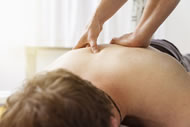 The massage pressure is usually fairly deep and intense - it is meant to be therapeutic rather than relaxing. At times, it may be more uncomfortable than you are used to, particularly when working on trigger points and areas of tension/scar tissue. However, it should never be painful, so if at any point you need your therapist to ease up, just let them know.
The massage pressure is usually fairly deep and intense - it is meant to be therapeutic rather than relaxing. At times, it may be more uncomfortable than you are used to, particularly when working on trigger points and areas of tension/scar tissue. However, it should never be painful, so if at any point you need your therapist to ease up, just let them know.
After the session, you may be taught some home stretches for maintenance, or given advice about how you can help yourself in between sessions. It is common to feel a little ‘post-treatment soreness’ for a day or so afterwards – this should settle fairly quickly and you should feel better once it has dissipated. It is also a good idea to drink plenty of water after your massage session, to help flush out any toxins/waste metabolic by-products, and to rehydrate your system. You may also want to give your body some relative rest for a 24-48 hours (ie: refrain from strenuous exercise) so as to benefit fully from the treatment. Listen to your body and if you need a day off, take one!
Cautions/Contra-indications:
There are certain circumstances in which sports massage should not be performed. Below is a list of some of the cautions and contra-indications to sports massage. This should not be considered an exhaustive list, and you should always seek professional advice from your sports massage therapist before proceeding:
- Fever and infectious diseases – massage works to further increase the body’s temperature so this could work against the body’s natural defence system or worsen the spread of a disease. Also, the therapist is potentially exposed to the illness / virus.
- Open wounds – after the initial 48-72 hours, massage around the affected area may be possible, but this would depend on the nature and extent of the wound.
- Infections of the skin and/or soft tissues – includes rashes, blisters, bruises, burns, chilblains and boils. Usually these problems are localised so massage in other areas may still be appropriate.
- Acute contusions / haematoma – massage to an area of bleeding within the muscle is likely to cause further bleeding and may lead to later complications (eg: myositis ossificans – see below).
- Acute inflammation – arthritis (joint – eg: rheumatoid arthritis, gout), tendonitis (tendon), bursitis (bursa), periostitis (bone sheath), phlebitis (vein), dermatitis (skin) – massage over direct areas of inflammation is not advised as it may cause further damage and adversely affect the healing process. It may be possible to massage around the affected area, depending upon the extent and location of the inflamed structure/area.
- Myositis ossificans (calcification within a muscle) – this can occur if a haematoma is left untreated and calcifies (turns to bone) within the muscle. Trying to break this down with massage can cause further damage to the local soft tissues.
- Fractures / broken bones – light massage to local soft tissues may provide some relief, but massage over a broken bone can risk damage to the union of the fracture site, cause pain and potential deformation of the healing bone.
- Acute muscle/tendon tears or tendon ruptures – tears to muscles and tendons should not be treated with massage for at least 48-72 hours, and then only with care and by a trained professional. Tendon ruptures require a surgical opinion, not massage.
- Deep vein thrombosis (DVT) – this is a thankfully rare but potentially lethal blood clot within a vein. Most commonly located within the muscles of the calf and can be identified by acute pain on walking and a tight, red, often shiny area within the belly of the calf muscle. If massaged, the clot can dislodge and cause a blockage within the veins of the heart and lungs. Any suspicion of a DVT should be treated very seriously and medical attention sought urgently.
- Varicose veins – light massage may actually be highly beneficial in improving circulation, however, deep massage should be avoided as it may worsen the problem.
- High blood pressure – increased blood pressure puts excess stress against the walls of blood vessels, so deep massage techniques which increase the circulation should be avoided.
- Bleeding disorders (such as haemophilia) – techniques which increase blood circulation may lead to uncontrolled bleeding and further tissue damage.
- Recent surgery – care needs to be taken, depending upon the surgery undertaken, as massage may disrupt the healing process and risk circulatory problems (see above).
- Hernia – hernias are protrusions of organs through a muscular wall. Attempts to rectify this situation using massage techniques should not be attempted. In most cases, a medical/surgical opinion should be sought.
- Tumours / cancer – some lumps and bumps may simply be fatty tissue, benign cysts or even muscle trigger points, and an experienced therapist should be able to advise you on this. In such circumstances, massage is not contra-indicated. However, if you have a history of cancer, because many tumours and cancers can spread through the lymphatic system, and massage can influence lymphatic flow, there is a risk that this may spread the disease process. Massage strokes that increase the circulation should therefore be avoided.
- Pregnancy – massage may not be advised within the first trimester (3 months) of pregnancy, as the foetus is not yet fully stable and massage can sometimes have unexpected effects/results. However, later on in the pregnancy, massage can have some wonderful benefits and can be performed in a position that is both comfortable and safe for you and your baby.

